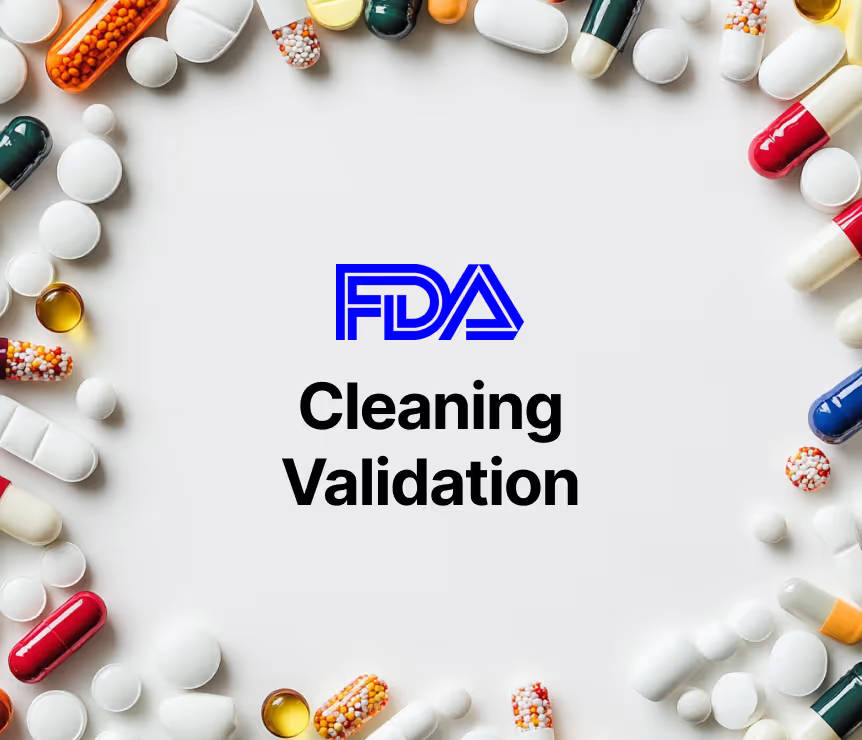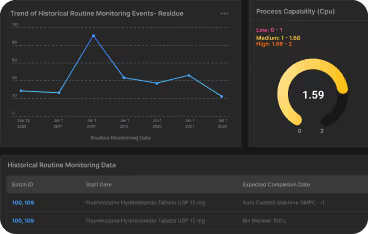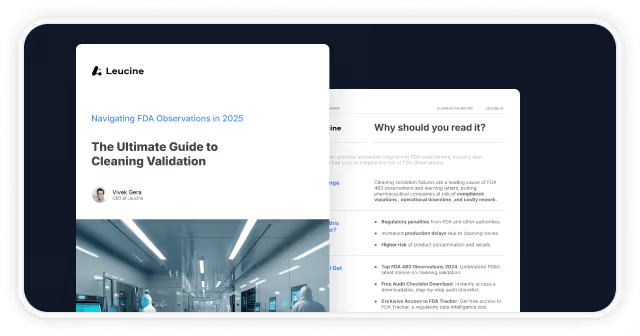Recent FDA Form 483 Observations on Cleaning Validation (2024)

Recent FDA Form 483 Observations on Cleaning Validation (2024)
Insights, CAPA & Readiness Tips
In 2024, cleaning validation continues to be a focal point during FDA inspections. Recent Form 483s highlight critical gaps in how pharmaceutical manufacturers validate and document cleaning procedures — especially in multi-product facilities.
This blog unpacks real FDA observations from 2024, explores what went wrong, and provides actionable CAPAs and preventive strategies to avoid escalation.
Why Is This Important?
Observations related to cleaning validation can quickly escalate from compliance gaps to regulatory enforcement. Inadequate cleaning can lead to cross-contamination, data integrity issues, and product recalls — all of which put patient safety at risk.
By analyzing recent 2024 FDA Form 483s, you’ll gain clarity on:
- What FDA investigators are flagging right now
- Where cleaning validation often falls short
- How to implement risk-based CAPAs and stay audit-ready
Key FDA Form 483 Observations in Cleaning Validation (2024)
These real-world observations were issued during an FDA inspection at Zhejiang Huahai in November 2024, by Investigator Alan A Rivera. The findings serve as critical lessons for any pharma manufacturer relying on manual processes or outdated validation protocols.
1. Inadequate Cleaning Sampling Procedures
Summary: The firm’s sampling approach lacked scientific justification to ensure results were representative.
Excerpt from Observation:
“The procedure for collecting cleaning samples was not designed to ensure representative and reliable results.”
Implication: Inadequate sampling can miss residual contamination, compromising both validation and product safety.
Corrective Action: Revise sampling procedures to reflect worst-case scenarios and risk-based locations.
Preventive Action: Include rationale in protocols and train operators using visual swabbing SOPs.
Observation Details:
- Company: Zhejiang Huahai
- Date of Issue: November 20, 2024
- FDA Investigator: Alan A Rivera
2. Lack of Quality Unit Oversight
Summary: The Quality Unit failed to review and approve cleaning validation activities.
Excerpt from Observation:
“Lack of Quality Unit oversight to ensure integrity of the cleaning validation process.”
Implication: Without QCU involvement, validations may lack scientific rigor or complete documentation.
Corrective Action: Define mandatory QCU checkpoints across the validation lifecycle.
Preventive Action: Automate review workflows and maintain audit trails for QCU approvals.
Observation Details:
- Company: Zhejiang Huahai
- Date of Issue: November 20, 2024
- FDA Investigator: Alan A Rivera
3. Incomplete Laboratory Records Supporting Cleaning Validation
Summary: Validation reports were missing key raw data and test results.
Excerpt from Observation:
“Laboratory records do not include complete test data necessary to support cleaning validation.”
Implication: Missing data undermines traceability and regulatory trust in your validation process.
Corrective Action: Capture lab data electronically and standardize result templates.
Preventive Action: Conduct regular audits to ensure data completeness and integrity.
Observation Details:
- Company: Zhejiang Huahai
- Date of Issue: November 20, 2024
- FDA Investigator: Alan A Rivera
4. Deviations from Analytical Procedures Without Justification
Summary: Analytical methods used during cleaning validation were changed without proper documentation.
Excerpt from Observation:
“Deviations from analytical test procedures are not documented or justified.”
Implication: Unapproved deviations can trigger data integrity concerns and invalidate results.
Corrective Action: Enforce change control for any deviations from approved analytical procedures.
Preventive Action: Document rationale, obtain QCU approval, and link deviations to validation protocols.
Observation Details:
- Company: Zhejiang Huahai
- Date of Issue: November 20, 2024
- FDA Investigator: Alan A Rivera
5. Inadequate Investigations of Cleaning Failures
Summary: Deviations or test failures were not fully investigated or documented.
Excerpt from Observation:
“Laboratory investigations are not adequately conducted for cleaning failures.”
Implication: Uninvestigated failures can result in recurring contamination and non-compliance.
Corrective Action: Update deviation procedures to include root cause, impact assessment, and CAPA.
Preventive Action: Link cleaning failures to your QMS and require QCU sign-off before closure.
Observation Details:
- Company: Zhejiang Huahai
- Date of Issue: November 20, 2024
- FDA Investigator: Alan A Rivera
[FREE PDF] Cleaning Validation Audit-Readiness Checklist
Want to ensure your cleaning validation process is inspection-ready?
Download our expert checklist, built from hundreds of Form 483s analyzed on FDA Tracker.
Included:
- Sampling plan design
- Worst-case rationale
- Hold time studies
- Residue limit justifications
- Re-validation triggers
Severity of Observations
Proactive Compliance Strategies to Avoid Escalation
Here’s how to protect your facility from future cleaning validation-related 483s:
Track Real-Time Trends with FDA Tracker
Stay ahead by monitoring cleaning validation observations, investigator patterns, and company-specific trends.
Automate Cleaning Validation with CLEEN
Use Cleen to generate residue limits, manage protocols, and trigger re-validation alerts.
Standardize Documentation
Move from paper-based systems to electronic logs for lab data, sampling plans, and deviation records.
Train on FDA Trends
Base training on actual observations from investigators like Alan A Rivera, tracked through FDA Tracker.
Use Internal Audit Checklists
Run mock audits using the downloadable checklist to assess readiness.
Conclusion
Cleaning validation isn’t just a regulatory requirement — it’s a critical defense against cross-contamination and compliance failures.
The 2024 FDA Form 483s show that the agency is laser-focused on risk-based validation, documentation completeness, and QCU oversight. Using tools like FDA Tracker and systems like Cleaning Validation Software, pharma manufacturers can proactively manage compliance — and be fully prepared when the FDA walks in.
Be audit-ready always—track smarter and close compliance gaps with FDA Tracker .
Frequently Asked Questions























